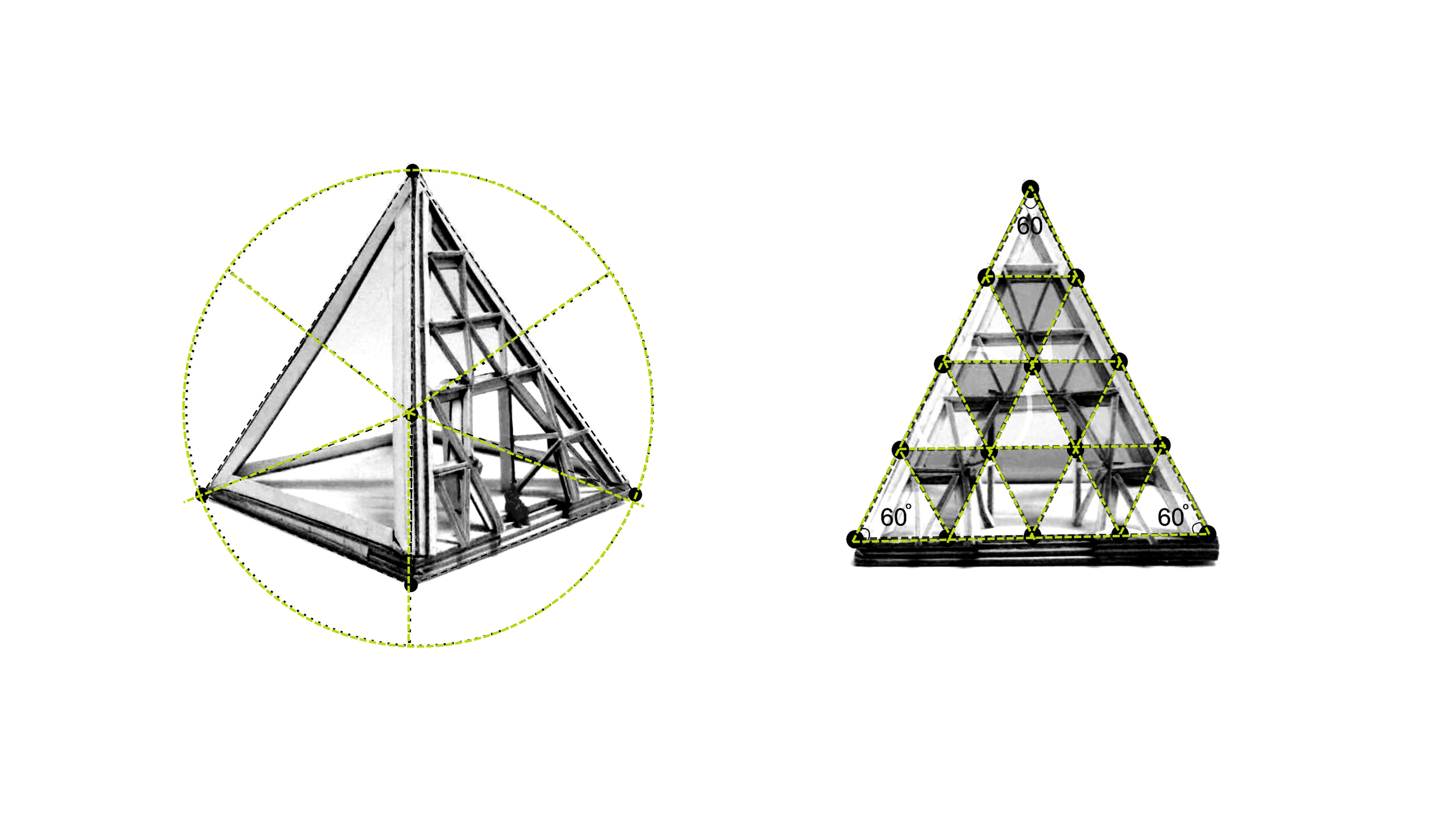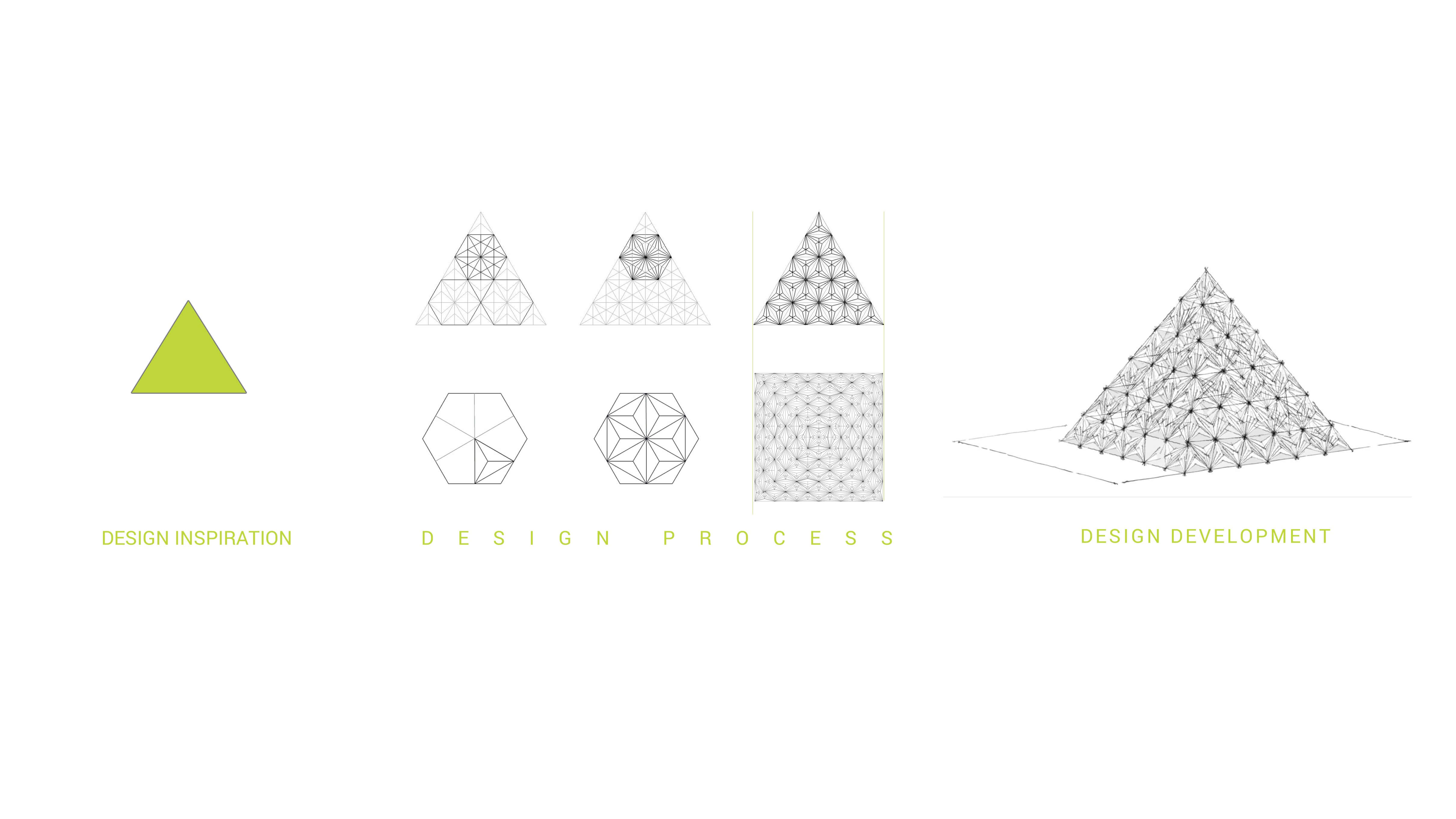Describe the Development of the Pyramid as an Architectural Form.
Snefru then attempted to build a pyramid near Saqqarah. The three primary pyramids on the Giza plateau were built over the span of three generations by the rulers Khufu Khafre and Menkaure.

Case Study The Geometrization Of Architectural Form Triangle Pyramid Zeitgeist Design Development
The pyramids construction process is very sophisticated and the scientists and researchers till today try to explain the building techniques used by the Egyptians.

. The Romans brought about developments in stone. To conclude we can say that the Pyramids Building clarify the creativity of the ancient Egyptians in engineering and architecture. Pyramid to a true pyramid shape as kings continued to build tombs for their kings.
The actual building of a pyramid places special emphasis on the accuracy of setting the first course of the outer facing constructing the core and nucleus and covering it with the outer facing and placing the pyramidion on top. It was the simplest way to build it this form was born from the very first pyramid attempt that of Djoser. A number of astronomical observations were used to precisely align its corners with the four cardinal points.
The architectural features of the Great pyramid offer an invaluable insight into the builders their methods and the process of construction. Each pyramid was part of a royal mortuary complex that also included a temple at its base and a long stone causeway some nearly 1 kilometer in length leading east from the plateau to a valley temple on the edge of the floodplain. Archaeologists study aspects such as construction materials technologies used and cultures that used these architectural artifacts and for what function they were used for.
He concluded that there must have been a connection between the. This Step Pyramid stands on the west bank of the Nile River at Sakkara near Memphis. Around 2780 BCE King Djosers architect Imhotep built the first pyramid by placing six mastabas each smaller than the one beneath in a stack to form a pyramid rising in steps.
Elaborate form of architecture with a religious hnction. As previously mentioned stone architecture began with a stacking system of which the Egyptian pyramids are typical examples. Egyptian pyramid construction techniques are the controversial subject of many hypotheses.
The earliest dated pyramid is the step pyramid built for the King Djoser in the 3rd dynasty in Saqqara. The Step Pyramid. The Pyramids of Giza The Pyramids of Giza also known as the Giza Necropolis are one of the oldest remaining wonders of the world.
T he Kings chamber as a Djedt. Later pyramids were not constructed in the same way as earlier ones. Finally they were built without steps and a point was added on the stop thus creating the true pyramid form.
Describe the development of the true pyramid form. It is the famous Imhotep wh. His architect Imohtep created a step pyramid by stacking six mastabas rectangular buildings of the sort in which earlier kings had been buried.
Among these the Pyramids of Giza are considered the greatest architectural achievement of the time. The Greek historian Herodotus was told that it took 100000 men 20 years to build the Great Pyramid at Giza. A later king Snefru made further advancements in pyramid building.
The pyramid of Djoser consists of six steps a. Scholars today however think it may have been built by only 20000 men over 20 years. Yes there is an architectural coherence between all the pyramids despite what one might believe.
Most of the construction hypotheses are based on the belief that huge stones were carved from quarries with copper chisels and these. Fahkry notes that some Egyptologists believe that the development of the pyramid represents simply an architectural evolution while others see in it the triumph of one religious cult over another. This pyramid had a square base and four triangular walls that sloped inward to meet at a central point.
The largest and most well-known pyramids in Egypt. Developed from the mastaba tomb they are one of the most enduring symbols of Egyptian art in general and Egyptian architecture in particular. His first pyramid began as a step pyramid but he later filled in the steps to create a more pyramid-like shape.
It was designed as several mastabas stacked on top of each other. In conclusion the pyramids were a great architectural design used by many cultures throughout the p ast for various reasons. Built during a time when Egypt was one of the richest and most powerful civilizations in the world the pyramidsespecially the Great Pyramids of Gizaare some of the most magnificent man-made.
Image via Wikimedia Commons. This pyramid is known as a step pyramid. Arguably the most famous form of late Prehistoric art the pyramids of Ancient Egypt are the worlds largest funerary edifices or tombs.
These techniques seem to have developed over time. Plan of Palace of Sargon Khosrabad Reconstruction. Ancient Egyptians used pyramids as a symbol of connection and proximity between the sun god and ruler.
Mastabas of diminishing size were stacked on top of each other to form a step pyramid. An architect named Imhotep created the first version of a pyramid. The first pyramids were pyramids with degrees they have the shape of a staircase on all four sides.
A pyramids large square base creates a very stable structure. ARCHITECTURAL COMPOSITION OF A PYRAMID.
Egyptian Pyramids Architecture Characteristics History

Case Study The Geometrization Of Architectural Form Triangle Pyramid Zeitgeist Design Development

The Ancient Egyptian Architecture Ancient Egyptian Architecture Ancient Egypt History Ancient Egyptian

The Anatomy Of A Step Pyramid This Image Shows The Most Likely Construction Phases Of The Step Pyramid Image Pyramids Underground World Great Pyramid Of Giza
No comments for "Describe the Development of the Pyramid as an Architectural Form."
Post a Comment